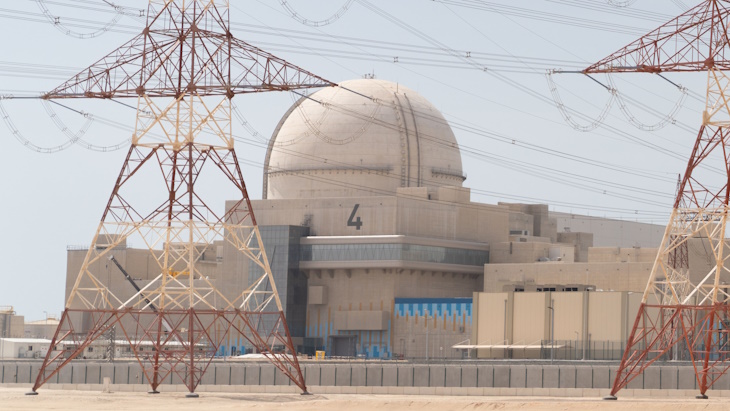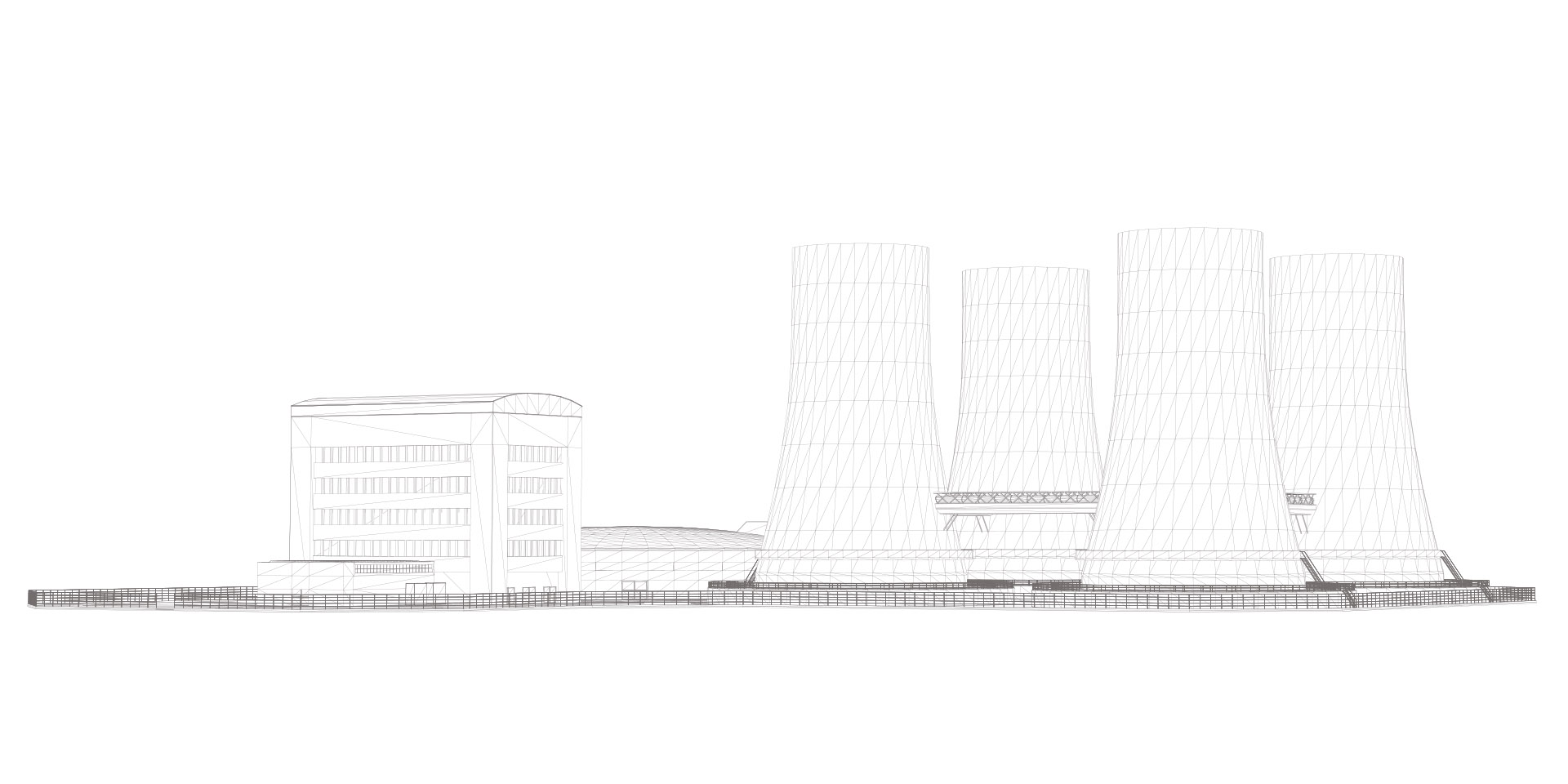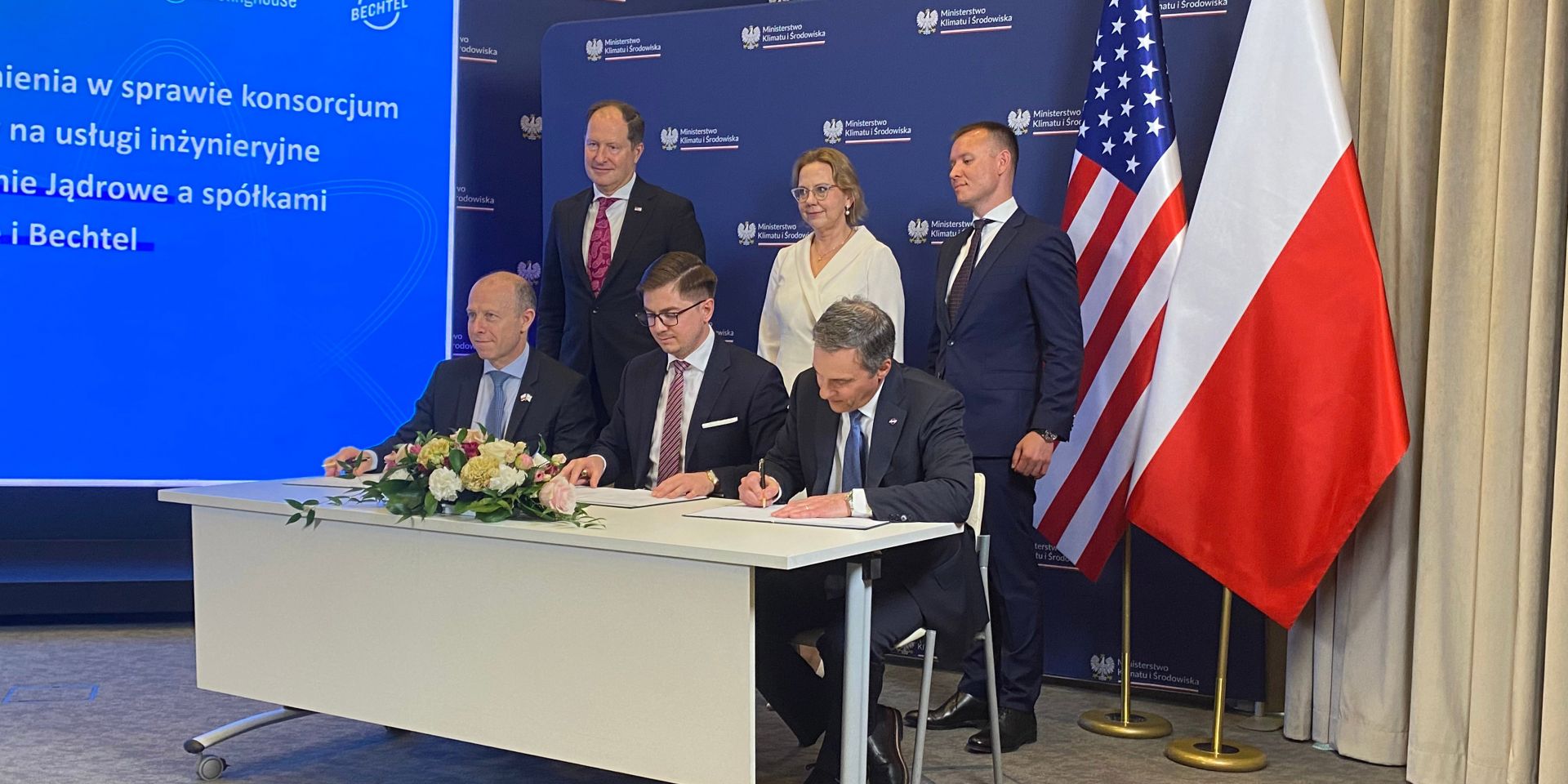NRC fees updated for FY 2023
The Nuclear Regulatory Commission recently revised its regulations for the licensing, inspection, special projects, and annual fees it will charge its applicants and licensees for fiscal year 2023.

The Nuclear Regulatory Commission recently revised its regulations for the licensing, inspection, special projects, and annual fees it will charge its applicants and licensees for fiscal year 2023.
The Nuclear Regulatory Commission staff has completed its final safety evaluation for Kairos Power’s application to build its Hermes advanced test reactor at a site in Oak Ridge, Tenn., the agency announced recently. The evaluation found no safety aspects precluding issuance of a construction permit for the proposed reactor.
The Gateway for Accelerated Innovation in Nuclear (GAIN) announced June 26 the companies that have received GAIN Nuclear Energy Vouchers, which allow private companies to access the expertise and research capabilities of Department of Energy national laboratories to advance their projects toward commercial deployment. This is the third round of GAIN vouchers awarded for fiscal year 2023; the first round was announced in December 2022 and the second in March.
The future of nuclear power and nuclear science will be informed by the past. But how did “the future” look six decades ago? We’ll check back on the predictions of ANS members in 1965 before assessing the investments in technology, workforce, and licensing needed now.

When a technical problem with a feedwater pump at Unit 1 of the Comanche Peak nuclear power plant caused the unit to shut down temporarily on June 16, a new backup system was employed by grid operator Electric Reliability Council of Texas (ERCOT) to make up for the electricity loss.
The commercial operation of Georgia Power Company’s Vogtle-3 nuclear power plant has been delayed again, this time because of turbine troubles, the Associated Press reported last week.

Westinghouse Electric Company this week inked agreements with two of its European customers—Ukraine reactor fleet operator Energoatom and Bulgaria’s Kozloduy NPP–Newbuild, a firm established in 2012 to commission new nuclear power capacity at Kozloduy, Bulgaria’s only nuclear power facility.
The recent increase in investments and in new designs for nuclear power is essential if energy growth estimates are even marginally correct. The world will achieve a consumption of well over 35 trillion kilowatt-hours per year (35 tkWh/yr) by midcentury, with about 5 tkWh/yr of that in the U.S. This growth is essential because humanity requires about 3,000 kWh/yr per person to eradicate poverty, with the accompanying benefits of increased life span, decreased population growth, and decreased terrorism and war.
France’s Ministry of Energy Transition last Friday announced an investment of more than €100 million ($108 million) in civil nuclear sector training, research, and innovation in alignment with President Emmanuel Macron’s October 2021 unveiling of the “France 2030” investment plan, as well as his February 2022 call for a “rebirth of France’s nuclear industry.” (Among other things, Macron’s envisioned rebirth includes the construction of at least six new nuclear reactors and life extensions for the country’s existing units.)
Nuclearelectrica, operator of the Cernavoda plant—Romania’s sole nuclear power facility—has announced the signing of a support agreement with the Romanian government for further development of the project to complete construction of Cernavoda-3 and -4.
.jpg)
The Emirates Nuclear Energy Corporation (ENEC) announced on June 8 that Barakah-4, the fourth and final Korean-designed APR-1400 reactor to be built at the United Arab Emirates’ Barakah nuclear power plant, has commenced the testing necessary to demonstrate its readiness for an operating license from the UAE’s Federal Authority for Nuclear Regulation.
A Soviet-era dam downstream from the Zaporizhzhia nuclear power plant in southeastern Ukraine collapsed last evening, causing the water level of the Kakhovka Reservoir north of the dam to drop and raising new concerns over the already jeopardized safety of the Russian-occupied nuclear facility, Europe’s largest. The reservoir supplies water for, among other things, Zaporizhzhia’s cooling systems.

Officially established on November 15, 2021, with the signing of the $1.2 trillion Infrastructure Investment and Jobs Act—aka the Bipartisan Infrastructure Law, or BIL—the Department of Energy’s Civil Nuclear Credit Program was designed to give owners/operators of commercial U.S. reactors the opportunity to apply for certification and competitively bid on credits to help support the continued operation of economically troubled units. Finally, the federal government, and not just certain farsighted state governments, would recognize nuclear energy for its important grid reliability and decarbonization attributes.

Having completed its review of the construction permit application for Kairos Power’s Hermes test reactor early last month, the Nuclear Regulatory Commission’s Advisory Committee on Reactor Safeguards (ACRS) recently submitted its conclusions to the agency, recommending approval.

Constellation Energy, operator of the largest U.S. reactor fleet, is acquiring NRG Energy’s 44 percent ownership stake in the South Texas Project nuclear plant, the Baltimore, Md.–based company announced this morning.

The Vogtle expansion project’s Unit 3 reactor has attained 100 percent energy output—the first time it has reached its maximum expected output of approximately 1,100 MWe, Georgia Power announced yesterday.

Westinghouse Electric Company, Bechtel, and Polish utility Polskie Elektrownie Jądrowe (PEJ)—the three firms leading the effort to build Poland’s first nuclear power plant—have announced the signing of a new agreement that defines the main principles of cooperation on the project’s design and construction and confirms the implementation of its next major stage.

Seven sites in southwestern Virginia have been identified as “competitive hosting grounds” for small modular reactors by a feasibility study Dominion Engineering, Inc. (DEI) prepared for the LENOWISCO Planning District Commission. (The planning district, based in Duffield, Va., serves the counties of Lee, Wise, and Scott and the city of Norton.) At a May 22 press conference at LENOWISCO’s offices, DEI chemical engineer and principal investigator Chuck Marks said the review represents the “very early stages of, does this region have what it takes to site one of these reactors, successfully deploy and successfully operate. And the answer is overwhelmingly yes,” according to an article in the Cardinal News.
NuScale Power announced yesterday that it has joined the Romanian Atomic Forum, aka Romatom, as a supporting member “to champion the association’s nuclear energy goals and further the next generation of advanced nuclear technology experts, technologists, and operators in Romania.” The move further deepens the American small modular reactor company’s commitment to the deployment of a VOYGR SMR plant in the Central European state.
 Both current and advanced nuclear are among the clean energy sources that will be required to reach the Biden administration’s declared goal of a zero-carbon U.S. electricity sector by 2035, concludes a new report from the Department of Energy.
Both current and advanced nuclear are among the clean energy sources that will be required to reach the Biden administration’s declared goal of a zero-carbon U.S. electricity sector by 2035, concludes a new report from the Department of Energy.
On the Path to 100% Clean Electricity, released last week, features a list of 10 actions the authors consider necessary for meeting that climate commitment. The full report can be accessed here.